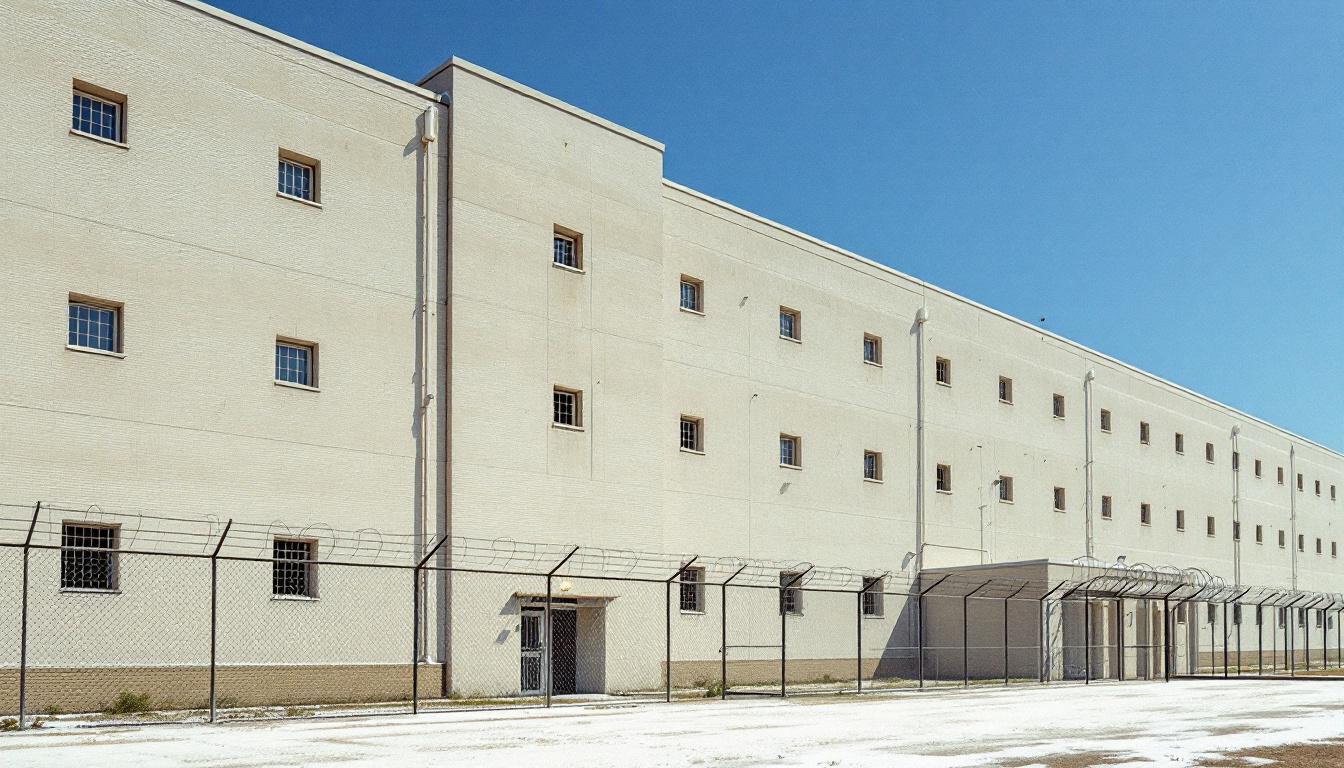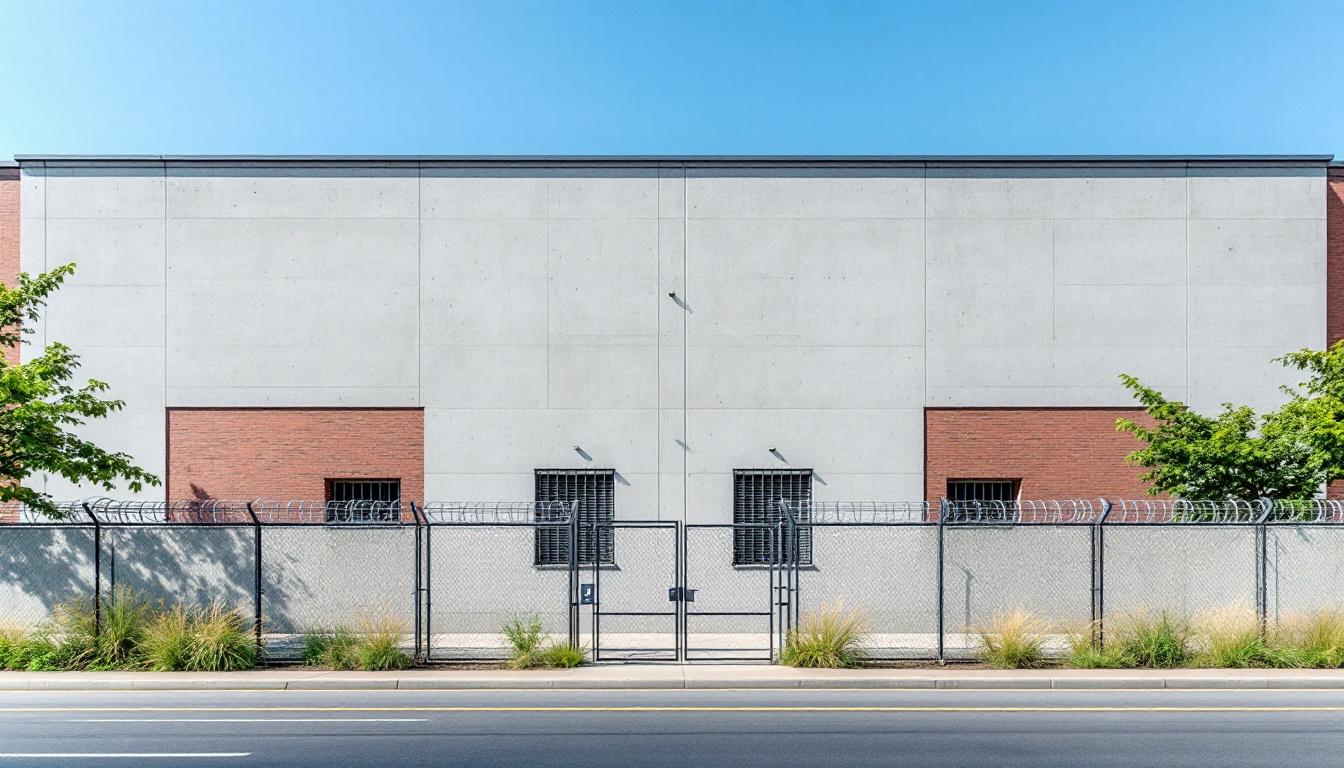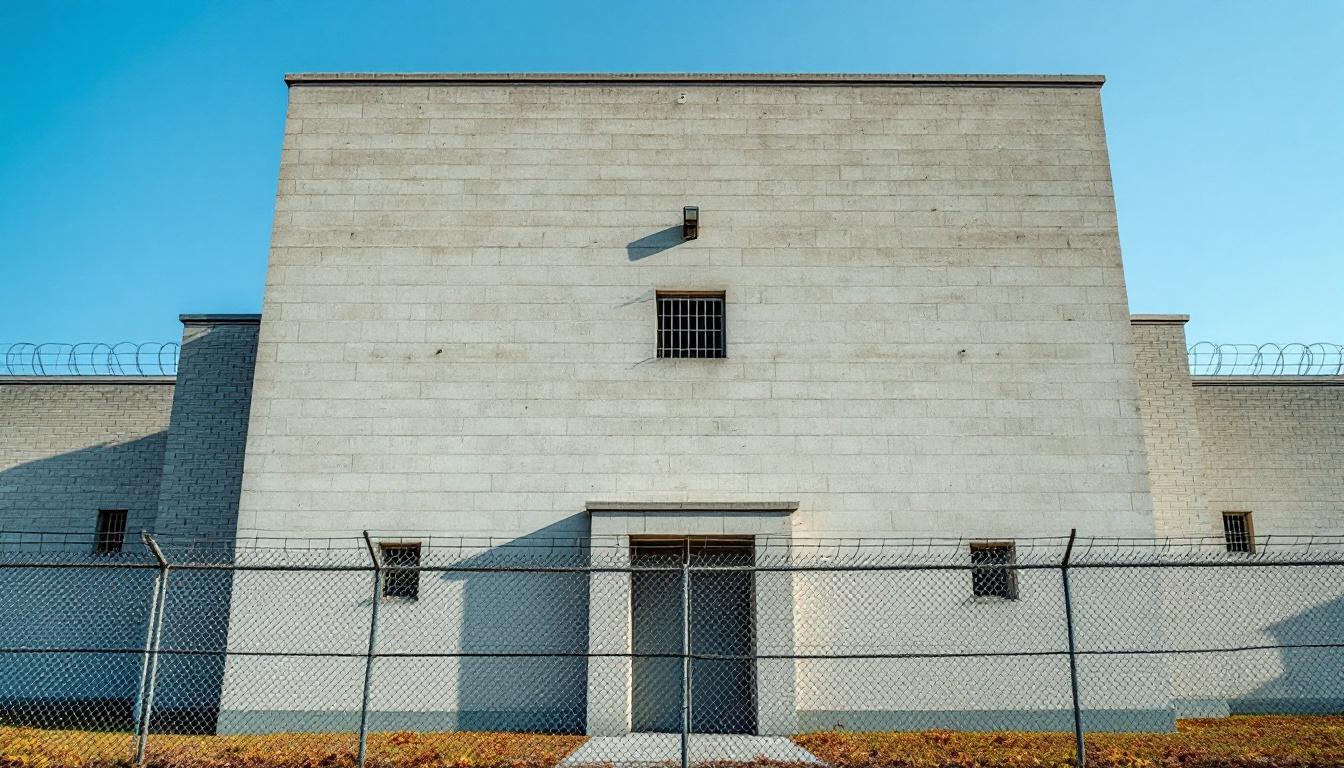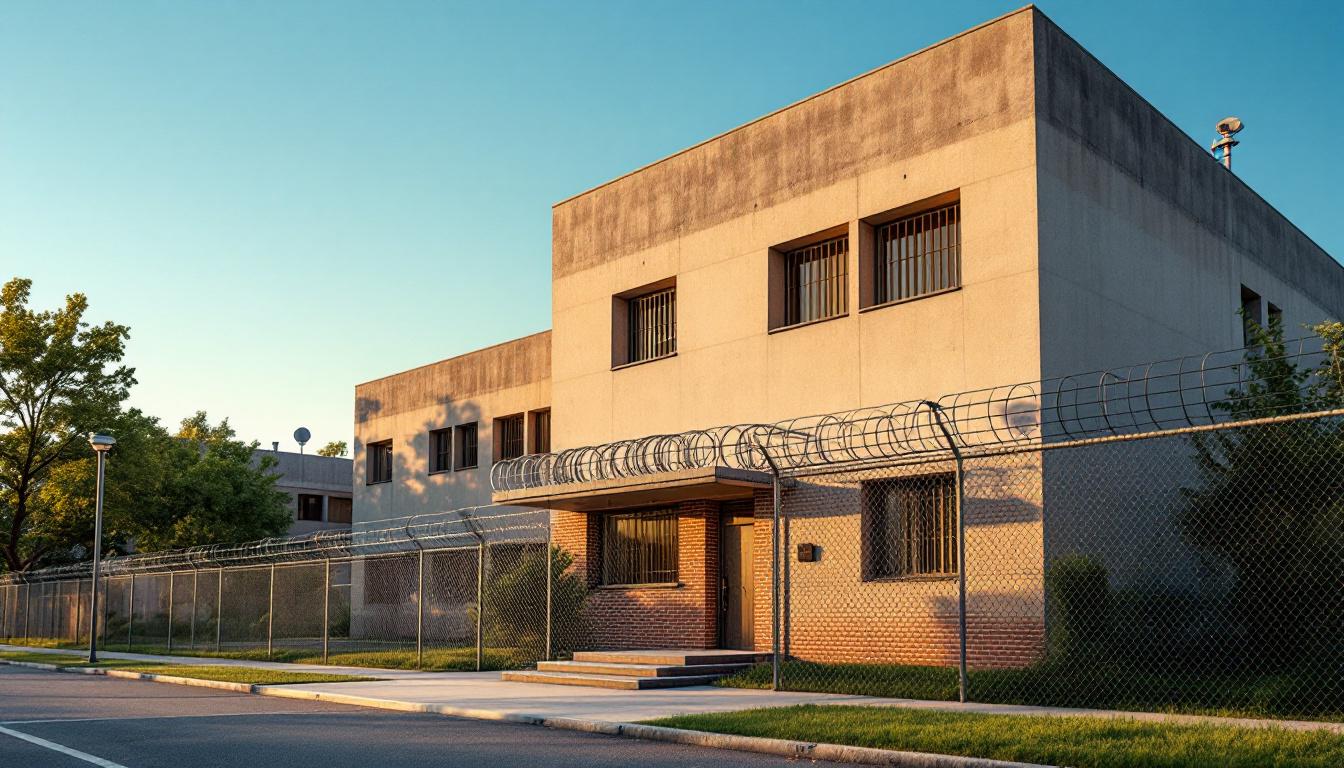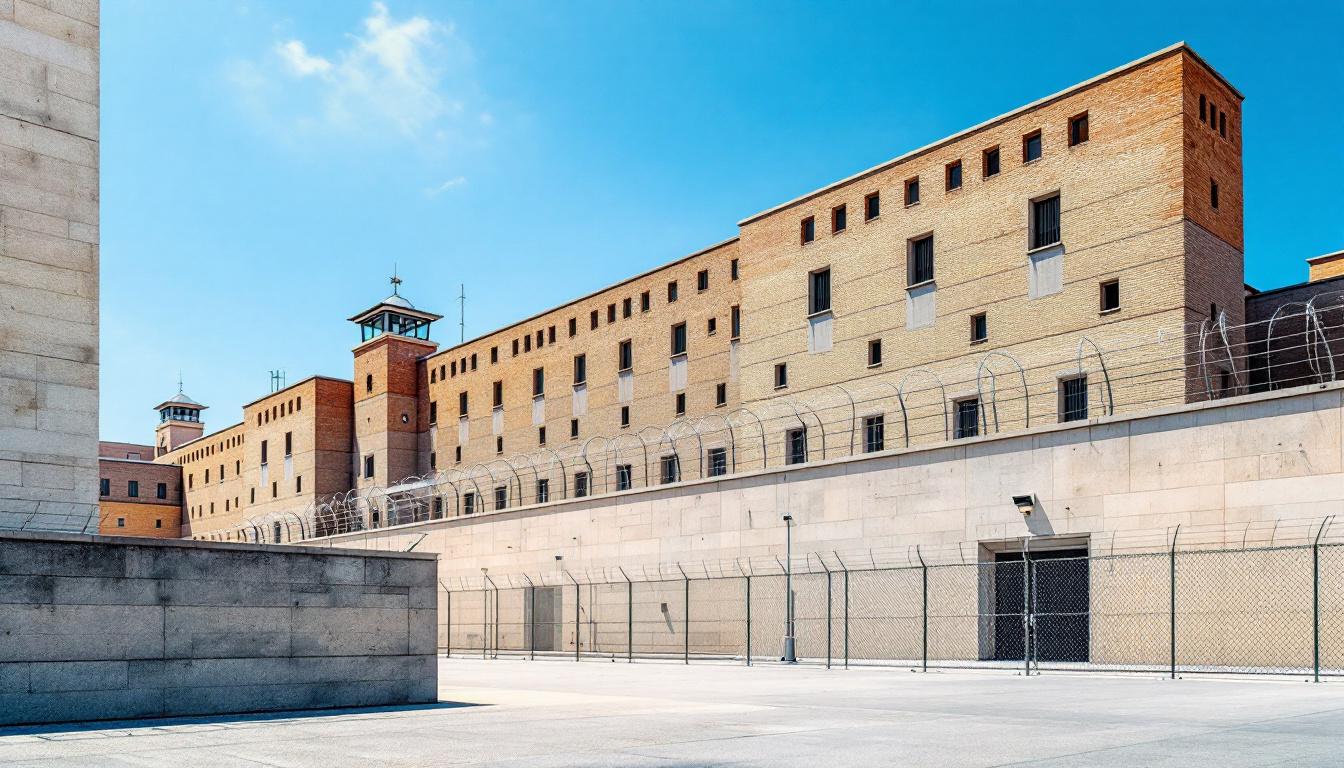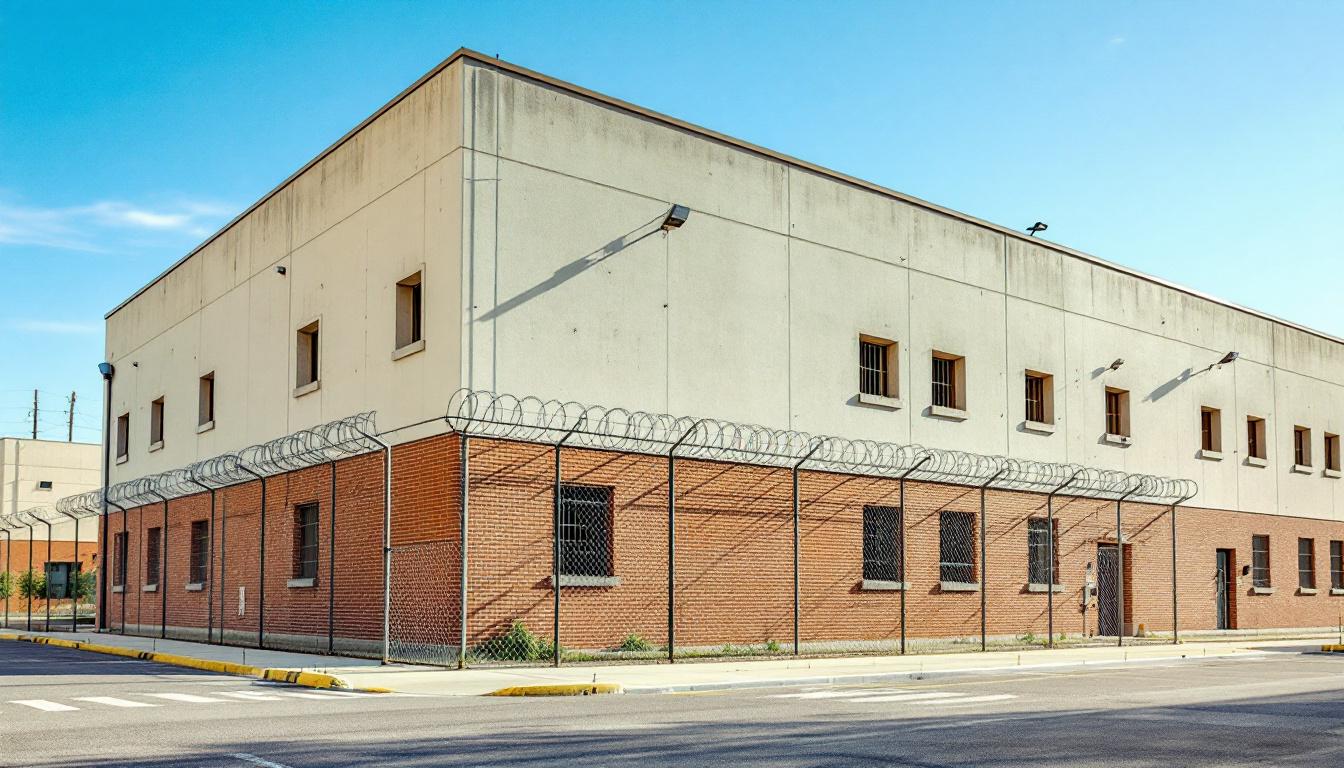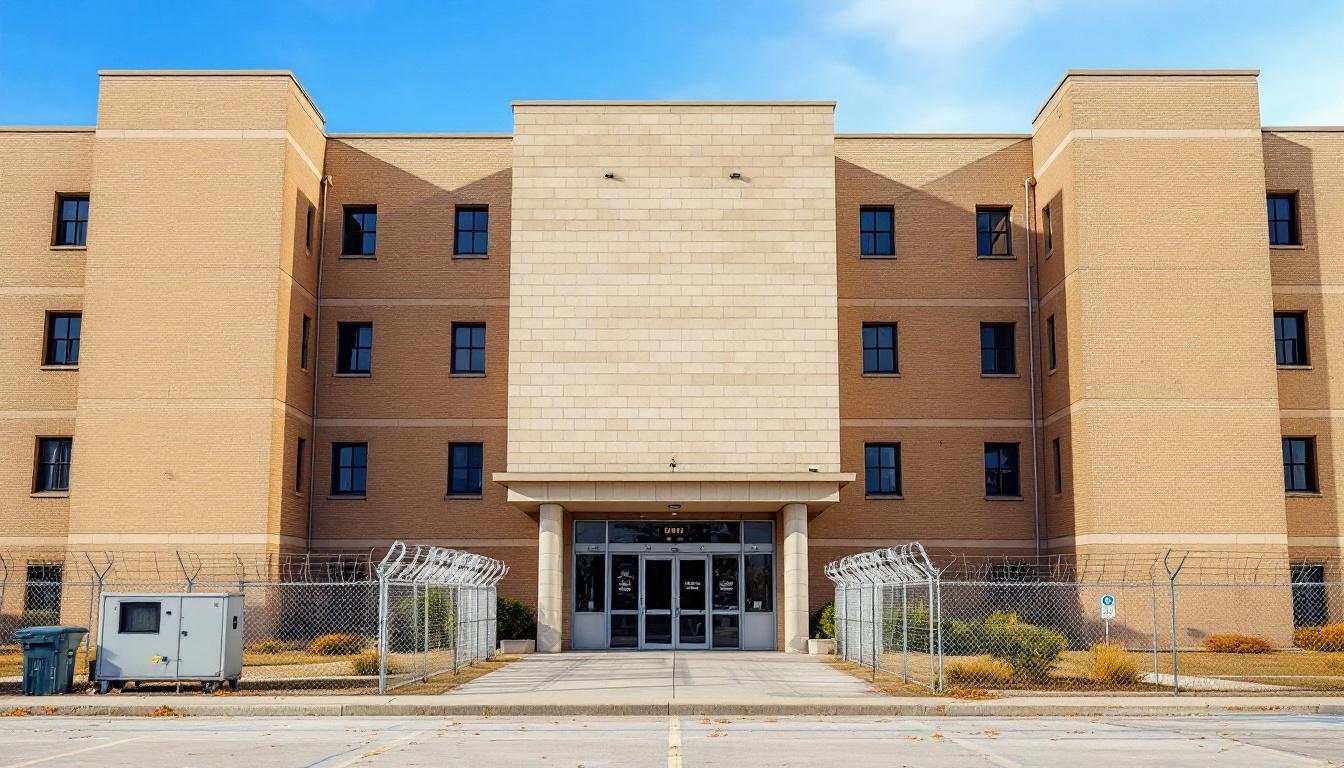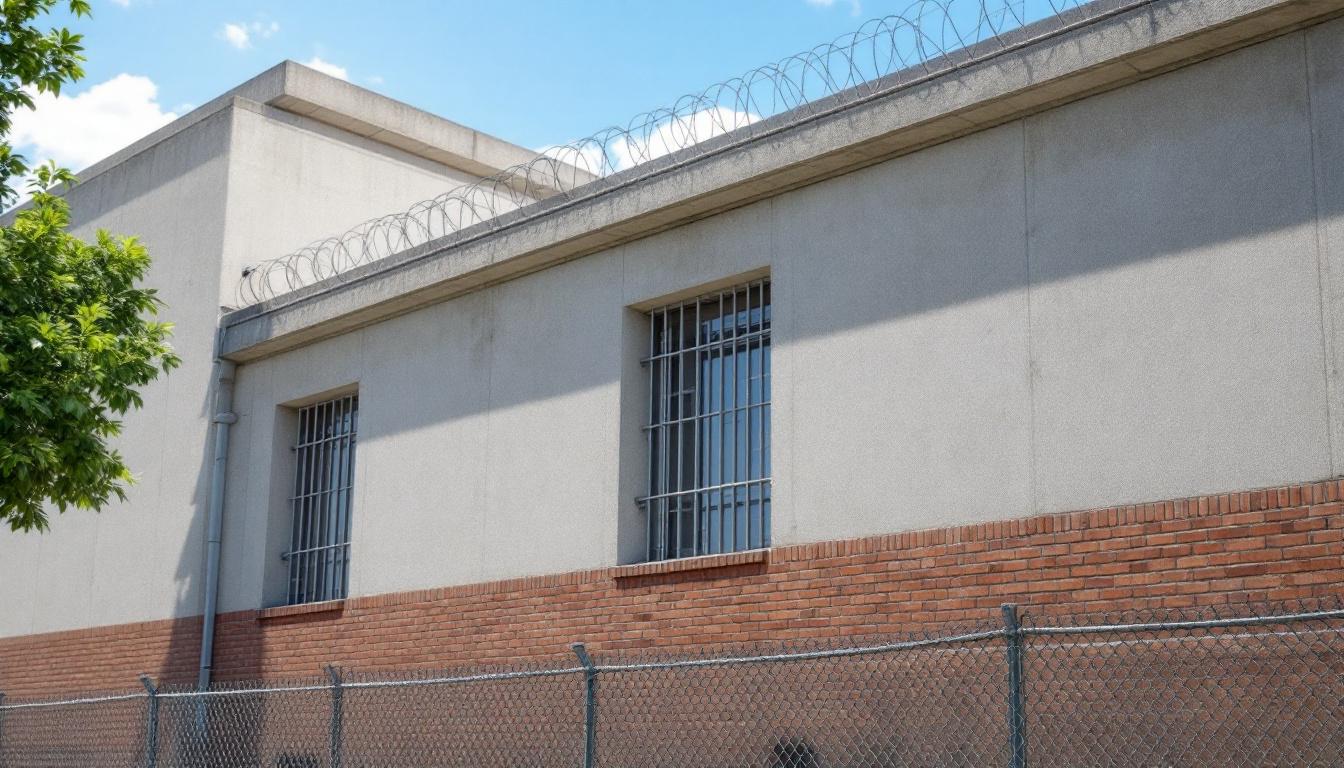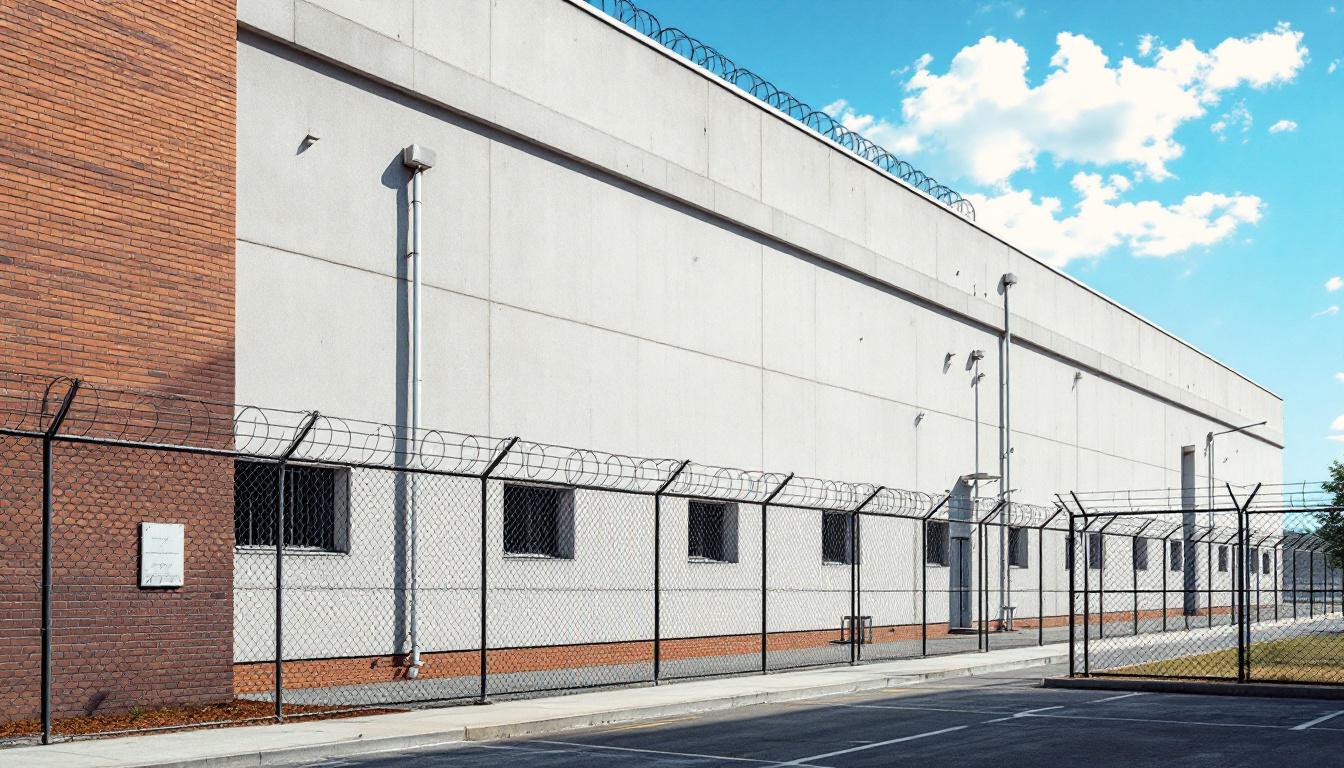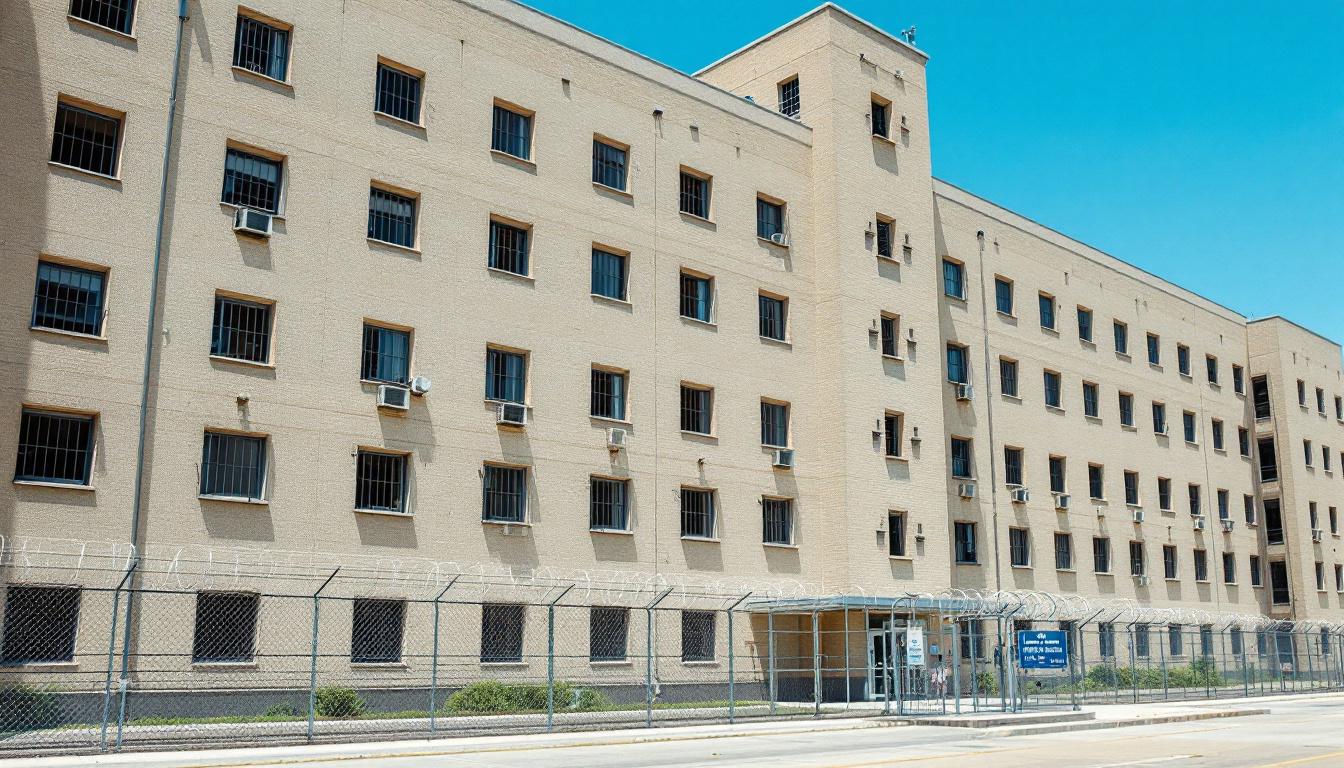
Quick Navigation
How to contact an inmate at Stanislaus County Jail
This comprehensive guide will walk you through how to connect with an inmate at Stanislaus County Jail. Follow the steps below to find an inmate and send letters and photos:
- Search for the inmate using our search tool below
- Create your account or log in to Penmate
- Write your message (up to 6,000 characters)
- Send instantly - inmates receive printed copies daily
Find an Inmate
Search for an inmate to start communicating today
Tip: You can search by first name, last name, or inmate ID number
To contact a person at Stanislaus County Jail start by searching for the person on the official facility website. Perform a search by following these steps:
- Step 1: Enter their first name and last name into the search form and click "Search"
- Step 2: Locate their inmate record
- Step 3: Write down their Inmate ID and any housing information provided
Important! Be sure to enter the person's full name. Nicknames should not be used.
How to Send Messages to Inmates

You can use your phone or computer to send emails, letters, and photos to an inmate. Messages are sent electronically to inmate tablets or kiosks at the facility. If you would like to send a message, start by searching for an inmate at Stanislaus County Jail.
Sending Photos and Postcards

A great way to send love and support to a loved one at Stanislaus County Jail is to send photos and postcards. It only takes a few minutes to send photos from your phone and it makes a huge difference. You can also mail postcards with words of support and inspiration, or design your own postcard for special moments like birthdays and holidays.
Important! Be sure not to send any explicit photos or they may not be approved by the facility. You can also use a photo printing app like Penmate to make sure your photos are printed at the correct size (4x6 or 3x5) and are mailed according to the rules and regulations of Stanislaus County Jail.
Frequently asked questions about Stanislaus County Jail
-
How long does it take to deliver a message?
If you're sending an email message your letter is usually delivered within 24-48 hours. For messages sent via mail you should expect delivery within 3-7 days. All messages will need be approved by Stanislaus County Jail.
-
How much does it cost to send a message to Stanislaus County Jail?
You can send a message free using your phone or mail a message via USPS for the price of a $0.60 stamp and envelope. You can also purchase credits or e-stamps from services starting at $1.99.
-
What services can I use to contact an inmate at Stanislaus County Jail?
Penmate
You can use Penmate to send letters and photos to an inmate from your phone. It's an easy way to stay in touch during your loved one's incarceration. Use the inmate locator to find an inmate's location and contact information, then you can send messages within a few minutes.
Securus messaging
Securus may be another option for communicating with an inmate at Stanislaus County Jail. You can create a friends and family account and purchase credits to send messages. All messages will be reviewed and must be approved by the facility.
JPay
Some county jails and state prisons may support sending messages with JPay. You must register an account with the system, find your loved one, and purchase stamps to send messages. For some locations you can also attach photos.
Smart Jail Mail
You may also check if Smart Jail Mail is available at Stanislaus County Jail. Smart Jail Mail is operated by Smart Communications and has contracted with some state and county jails. After purchasing credits, your messages and photos are sent to the facility, printed out, and then handed out to your loved one.
-
What is the mailing address of Stanislaus County Jail?
Mailing address:
Stanislaus County Jail
805 12th St
Modesto, CA 95354
Phone: (209) 491-8727Business hours:
- Monday: Open 24 hours
- Tuesday: Open 24 hours
- Wednesday: Open 24 hours
- Thursday: Open 24 hours
- Friday: Open 24 hours
- Saturday: Open 24 hours
- Sunday: Open 24 hours
-
What are the visiting hours at Stanislaus County Jail?
Visiting hours at Stanislaus County Jail vary by housing unit and security level. Generally, visits are scheduled on weekends and holidays, with some facilities offering weekday visits. Contact the facility directly at (209) 491-8727 or check their website for the current visiting schedule. Visits typically last 30-60 minutes and must be scheduled in advance.
-
What items are prohibited when sending mail to Stanislaus County Jail?
Prohibited items typically include: cash, personal checks, stamps, stickers, glitter, glue, tape, staples, paperclips, polaroid photos, musical or blank greeting cards, hardcover books, magazines with staples, and any items containing metal or electronics. Only send letters on plain white paper with blue or black ink. Photos must be printed on regular photo paper (no Polaroids). Always check with Stanislaus County Jail for their specific mail policies.
-
How do I send money to an inmate at Stanislaus County Jail?
You can send money to an inmate at Stanislaus County Jail through several methods: 1) Online using JPay, Access Corrections, or the facility's approved vendor, 2) Money orders mailed directly to the facility with the inmate's name and ID number, 3) Kiosks located in the facility lobby, or 4) Over the phone using a credit or debit card. Fees vary by method, typically ranging from $2.95 to $11.95 per transaction.
-
Can I schedule a video visit with an inmate at Stanislaus County Jail?
Many facilities now offer video visitation as an alternative to in-person visits. At Stanislaus County Jail, video visits may be available through services like Penmate, Securus Video Connect, GTL, or ICSolutions. Video visits typically cost $10-20 for 20-30 minutes and must be scheduled in advance. You'll need a computer or smartphone with a camera and reliable internet connection. Contact the facility for their specific video visitation policies and approved vendors.
-
What identification do I need to visit an inmate at Stanislaus County Jail?
All visitors must present valid government-issued photo identification such as a driver's license, state ID, passport, or military ID. Minors must be accompanied by a parent or legal guardian who can provide the minor's birth certificate. Some facilities require visitors to be on the inmate's approved visitation list, which may require a background check. Contact Stanislaus County Jail for specific ID requirements and visitor approval procedures.
-
How can I find out an inmate's release date?
To find an inmate's release date at Stanislaus County Jail, you can: 1) Use the online inmate search tool if available, 2) Call the facility's records department, 3) Contact the inmate's case manager or counselor, or 4) Have the inmate provide this information during a call or visit. For privacy reasons, some facilities only release this information to immediate family members.
Facility Overview
Official Website

About Stanislaus County Jail
Comprehensive reintegration services and educational programming form the foundation of operations at Stanislaus Men's Jail, CA, where individuals services extend beyond basic detention to encompass skill development and community preparation initiatives. This CA correctional facility typically offers vocational training opportunities, substance abuse counseling, and educational advancement programs designed to support successful community reentry for those nearing release.
Located in Modesto, California's Central Valley region, the county jail serves as an integral component within the state's broader correctional framework, housing individuals awaiting trial proceedings as well as those serving shorter-term sentences. The facility generally maintains connections with local community organizations and service providers to facilitate continuity of care and support networks that may prove essential during the transition period following release.
Within California's correctional system structure, this Modesto-based facility typically emphasizes rehabilitation-focused approaches that may include job readiness training, mental health services, and family reunification programming. The county jail often coordinates with regional workforce development agencies and educational institutions to provide inmates with practical skills and certifications that can enhance employment prospects upon return to the community, reflecting broader statewide initiatives aimed at reducing recidivism through comprehensive reintegration support.
Programs & Services
The breadth of developmental opportunities available to individuals reflects a comprehensive approach to addressing the diverse needs of those in custody. This multifaceted framework recognizes that meaningful change often requires access to various types of programming that can address educational gaps, develop practical skills, and provide therapeutic support. The facility typically emphasizes creating pathways that may help individuals build foundations for successful community reintegration while serving their sentences.
Educational initiatives often form a cornerstone of available opportunities, with individuals able to pursue basic literacy development, GED preparation, and adult education coursework. These academic programs may be complemented by vocational training opportunities that focus on developing marketable skills in areas such as construction trades, food service, or maintenance work. Also available are computer literacy courses and job readiness workshops that help individuals develop both technical competencies and workplace soft skills essential for employment success.
Support services extend beyond traditional education and job training to encompass rehabilitation programs designed to address underlying issues that may have contributed to criminal behavior. Victim awareness opportunities typically help individuals understand the impact of their actions while developing empathy and accountability. Also offered may be identification document assistance, which helps individuals obtain essential paperwork like birth certificates and social security cards needed for employment and housing upon release. These comprehensive support services often work together to create a holistic approach to personal development and community preparation.
Daily Life & Visitation
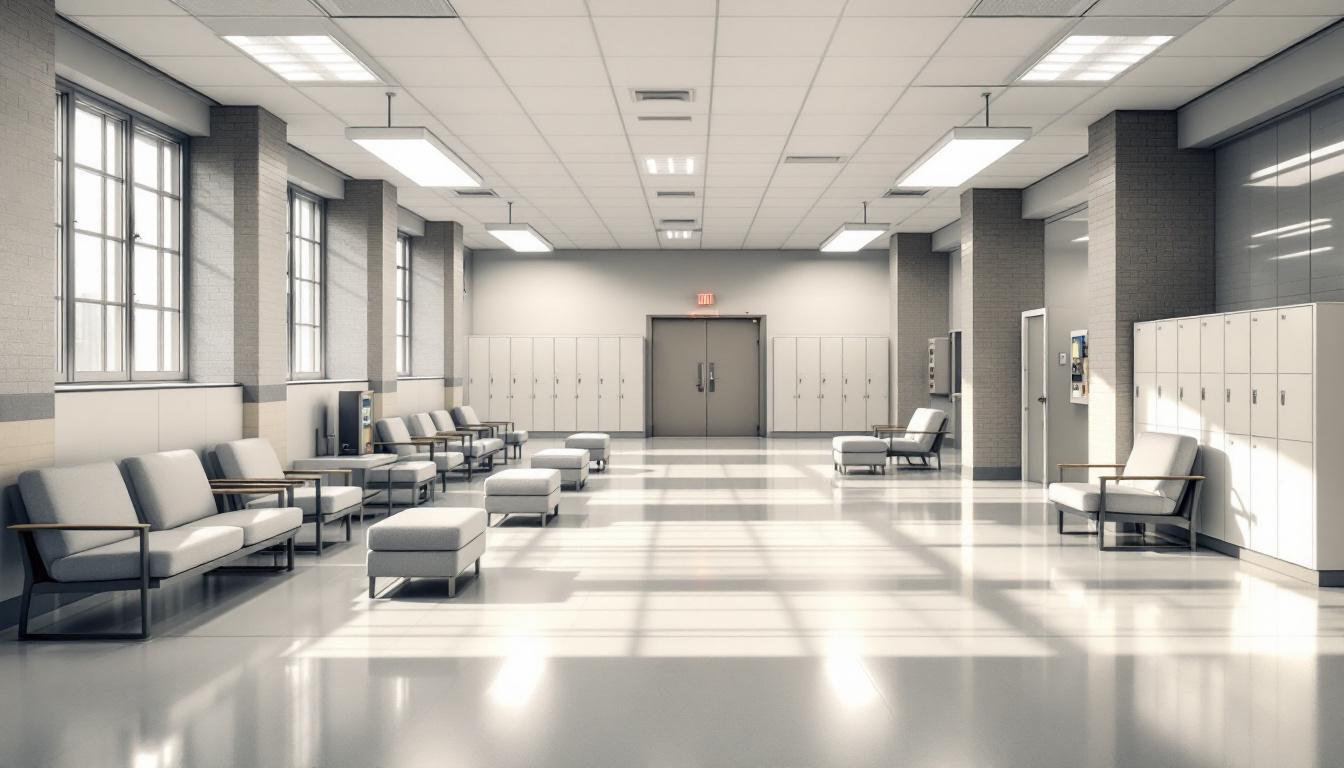
The sound of morning announcements now signals the beginning of another structured day, as individuals prepare for the routine that defines life within the facility's walls. Daily schedules typically revolve around regular meal times, count procedures, and various programming opportunities that help maintain order and purpose. The rhythm of institutional life generally includes wake-up calls, scheduled movements between housing areas, and designated times for personal hygiene and cell maintenance.
Living accommodations at the facility typically consist of shared housing units where individuals may be housed with one or more cellmates. These spaces generally include basic furnishings such as bunks, a small table, and storage areas for approved personal belongings. Also, individuals can usually access commissary services to purchase additional items like snacks, hygiene products, and writing materials, though purchases are typically limited by account balances and facility regulations. The housing environment often includes common areas where residents can watch television, play games, or engage in conversation during designated recreation periods.
Programming schedules regularly offer various activities designed to provide structure and skill development opportunities. Educational classes, vocational training, and substance abuse counseling may be available, though participation often depends on individual eligibility and program capacity. However, recreational activities such as outdoor exercise time, library access, and organized sports typically provide important outlets for physical activity and mental stimulation. Family connections remain vital through scheduled visitation periods and telephone privileges, allowing individuals to maintain relationships with loved ones. Also, correspondence through mail serves as another important communication method, helping residents stay connected to their support systems while navigating their time at the facility.
Ready to Connect?
Start communicating with your loved one today
Search for an Inmate
